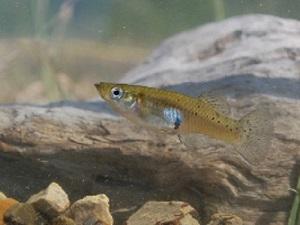Rodet Rodríguez Silva
Other projects
19 Nov 2013
An Approach to Freshwater Fish Knowledge in Western Cuba: Environmental Education in Rural Communities for Conservation Both our Fish and their Habitats
21 Apr 2015
Education of Local Communities Applying a Pilot Program Aimed to the Conservation of Vulnerable Freshwater Fish Species in Cienaga De Zapata National Park, Cuba
The aim of the project is to clarify and improve the systematic knowledge of Gambusia fishes in Cuban archipelago and generate an updated distribution map of relevant species and populations useful to health and conservation authorities for successful management strategies of this fishes.

Sampling a river shore.
The identification of species and geographically structured populations is an essential step to implement conservation efforts in terms of establishing the units for conservation and then designing the management plans. We will carry out an extensive sampling of Gambusia fish species in 25 localities along the Cuban archipelago. This wide sampling looks to covers most of the genetic variation inside each evolutionary lineage (species). Taking these samples as a starting point we will carry out a molecular analysis using several genes in order to determine evolutionary taxonomic units (species) of Gambusia in Cuba.

In addition a preliminary phylogeographic analysis, using mitochondrial DNA, will be carrying out in order to delimit population distributions. This procedure will produce a distribution map of species and populations of Gambusia in Cuba. Historical evolutionary scenarios will be evaluated by using the nested cladistic method and demographic parameters will be evaluated too. The present proposal seeks to provide strong information about the taxonomic and geographic distribution of species and populations of Gambusia, providing the basic knowledge for a deeper level population analysis (e.g. ecological studies). All data derived of this study will contribute to successful management strategies (e.g. conservation, restoration of populations and transplantations of fish for use as biological controls).
This project is the first study in the light of the molecular identification of Gambusia species and populations with importance for conservation in Cuba. The results of this study will be published and presented to authorities for conservation management in the National System of Protected Areas of Cuba. This institution is responsible for drawing up and checks management plans of animal and plants species in natural areas of Cuba.
On the other hand, this study could represent an important advance for a more efficient use of these fishes as natural controls of insects’ transmitters of human disease. The native fish reintroductions in the future with this proposal, will must consider a precise knowledge of the genetic lineages in order to increase both, efficacy and avoid the lost of diversity.